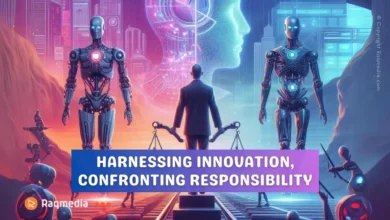Crafting an effective ChatGPT prompt is akin to wielding a linguistic tool with precision. In this era of AI interaction, the art of composing prompts transcends mere instruction; it is the gateway to harnessing the full potential of language models. As we navigate the landscape of prompt construction, let's unveil the power hidden within well-crafted directives.
How to Write the Perfect ChatGPT Prompt: A Comprehensive Guide
Have you ever marveled at the seemingly magical responses generated by AI-powered tools like ChatGPT, only to find your own prompts falling flat? Crafting the perfect prompt can be a fine art, blending creativity with precision to unlock the full potential of these powerful language models.

Crafting the perfect prompt for ChatGPT can be a game-changer in leveraging the full potential of AI-driven text generation. Whether you're using ChatGPT for business, education, or personal projects, understanding how to write an effective prompt is crucial. This comprehensive guide will walk you through the essential steps and tips to create prompts that yield accurate and valuable responses.
In this comprehensive guide, we will delve into the secrets of formulating the ideal ChatGPT prompt that not only elicits accurate and engaging responses but also sparks conversations that feel as natural as chatting with a friend. So, grab your virtual pen and let's embark on a journey to master the art of writing prompts that captivate and inspire!
Understanding ChatGPT
What is ChatGPT?
ChatGPT is an advanced language model developed by OpenAI. It is designed to understand and generate human-like text based on the input it receives. By leveraging machine learning and vast amounts of data, ChatGPT can assist with a variety of tasks such as answering questions, writing essays, creating content, and more.
How ChatGPT Works
ChatGPT operates using a transformer architecture, which processes text by considering the context of each word in relation to others. It generates responses by predicting the next word in a sequence, creating coherent and contextually relevant output.
Applications of ChatGPT
- Customer Support: Automated responses to common inquiries.
- Content Creation: Assisting writers with generating ideas and drafts.
- Educational Tools: Providing explanations and answering student questions.
- Entertainment: Engaging in conversational AI experiences.
The Importance of a Good ChatGPT Prompt
Why Prompts Matter
The quality of the prompt directly influences the effectiveness of the response generated by ChatGPT. A well-crafted prompt can guide the AI to produce accurate, relevant, and useful content, whereas a poorly constructed prompt may result in vague or off-topic answers.
Examples of Effective Prompts
- Effective: “Explain the process of photosynthesis in simple terms.”
- Ineffective: “Tell me about photosynthesis.”
Key Elements of a Perfect Prompt
Clarity
Ensure that your prompt is clear and unambiguous. Avoid using jargon or complex language that might confuse the AI.
Context
Provide sufficient background information so that ChatGPT can understand the topic and generate a relevant response.
Specificity
Be specific about what you want. Instead of asking broad questions, narrow down the focus to get more precise answers.
Structuring Your Prompt
Using Clear Instructions

Start your prompt with clear instructions to guide the AI on what you expect. For example, “List three benefits of regular exercise.”
Providing Necessary Details
Include all relevant details that can help the AI understand the context and provide a better response. For example, “Explain the economic impact of remote work during the COVID-19 pandemic.”
Setting the Right Tone
Decide the tone you want the response to have—formal, casual, technical, etc.—and indicate this in your prompt.
Common ChatGPT Prompt Mistakes to Avoid
Vague Prompts
Avoid prompts that are too broad or unclear, as they can lead to irrelevant responses.
Overly Complex Prompts
Keep your prompts straightforward. Overloading the prompt with too many questions or details can confuse the AI.
Lack of Context
Always provide enough context. Without it, ChatGPT might not fully grasp the subject matter, leading to incomplete or inaccurate responses.
Tips for Improving Your Prompts
Iterative Testing
Test your prompts multiple times and refine them based on the quality of responses you receive.
Gathering Feedback
Collect feedback from users or peers to understand how well the prompts are working and where improvements are needed.
Adjusting Based on Responses
Analyze the responses generated by ChatGPT and adjust your prompts accordingly to improve clarity and relevance.
Advanced Techniques for Better Prompts
Using Examples
Incorporate examples in your prompts to give ChatGPT a better idea of what you're looking for. For instance, “Write a product description for a new smartphone, similar to how it's done on tech websites.”
Asking Open-ended Questions
Open-ended questions encourage more detailed and comprehensive responses. For example, “What are the potential benefits and drawbacks of implementing AI in healthcare?”
Incorporating Constraints
Set specific constraints to narrow down the response. For example, “Summarize the book ‘1984' by George Orwell in 200 words.”
Elements of a Perfect ChatGPT Prompt
| Element | Description | Example |
|---|---|---|
| Clarity | Ensures the prompt is clear and easy to understand without ambiguity. | “Explain the process of mitosis in simple terms.” |
| Context | Provides necessary background information for the AI to understand the topic. | “Describe the economic impact of remote work during the pandemic.” |
| Specificity | Focuses on specific details to get precise and relevant responses. | “List three benefits of regular exercise.” |
| Tone | Indicates the desired tone of the response, such as formal or casual. | “Write a formal business email to request a meeting.” |
| Instructions | Gives clear and direct instructions on what is expected in the response. | “Summarize the plot of ‘To Kill a Mockingbird' in 200 words.” |
| Constraints | Sets boundaries or limitations to narrow down the response. | “Explain quantum mechanics in no more than 100 words.” |
| Examples | Provides examples to illustrate what is expected, helping guide the AI. | “Write a product description for a smartphone, like on tech websites.” |
| Open-ended | Uses open-ended questions to encourage detailed and comprehensive responses. | “What are the potential benefits and drawbacks of using AI in education?” |
Five Perfect ChatGPT Prompt Samples for Different Purposes
1. Educational Purpose
Prompt:
"Explain the theory of relativity in simple terms suitable for a high school student. Include examples to illustrate the concepts."Explanation:
This prompt is clear, specific, and provides context. It sets the tone for an educational response and instructs the AI to simplify the explanation for a high school audience, using examples to enhance understanding.
2. Business Communication
Prompt:
"Draft a formal email to a potential client, introducing our company's new software product. Highlight its key features and benefits, and request a meeting to discuss further."Explanation:
This prompt is clear and provides necessary context. It specifies the tone (formal), the content to include (key features and benefits of the product), and the desired action (request a meeting).
3. Creative Writing
Prompt:
"Write a short story about a detective who solves a mystery in a small town. Include elements of suspense and surprise twists."Explanation:
This prompt gives clear instructions on the content and genre, encourages creativity, and specifies the tone (suspenseful). It also sets the expectation for including plot twists, guiding the AI's narrative structure.
4. Technical Explanation
Prompt:
"Describe how blockchain technology works, focusing on its key components like decentralization, cryptography, and consensus mechanisms. Use simple language suitable for beginners."Explanation:
This prompt is specific, providing clear instructions on the focus areas (decentralization, cryptography, consensus mechanisms) and setting the tone for a beginner audience. It ensures the response is detailed yet easy to understand.
5. Customer Support
Prompt:
Provide a step-by-step guide on how to reset the password for our online banking platform. Make sure to include screenshots and troubleshooting tips for common issues."Explanation:
This prompt is specific and clear, outlining the exact task (resetting the password) and the format (step-by-step guide with screenshots). It also adds context by requesting troubleshooting tips, ensuring comprehensive support.
These prompts demonstrate how to effectively guide ChatGPT by providing clarity, context, specificity, and appropriate tone, ensuring high-quality and relevant responses for various purposes.
FAQs on Writing ChatGPT Prompts
How can I make my prompt clearer?
Focus on simplicity and avoid unnecessary jargon. Make sure the prompt is direct and to the point.
What should I do if ChatGPT's responses are off-topic?
Re-evaluate your prompt to ensure it includes sufficient context and specificity. Adjust the wording if necessary.
Can I use multiple questions in one prompt?
It's best to limit each prompt to one question or task to avoid confusing the AI. If needed, break down complex inquiries into simpler parts.
How specific should my prompts be?
Aim for a balance—be specific enough to guide the response but not so narrow that it limits the AI's ability to generate meaningful content.
Is it necessary to provide context for every prompt?
Providing context is crucial for obtaining accurate responses, especially for complex or less common topics.
What are some examples of effective prompt structures?
Start with a clear directive, followed by necessary details and context. Example: “Describe the main functions of the human brain, focusing on the cerebrum, cerebellum, and brainstem.”
Wrapping Up
Writing the perfect ChatGPT prompt is both an art and a science. By focusing on clarity, context, and specificity, and by avoiding common mistakes, you can create prompts that elicit accurate and useful responses from ChatGPT. Experiment with different techniques, gather feedback, and continually refine your approach to master the skill of prompt crafting.









